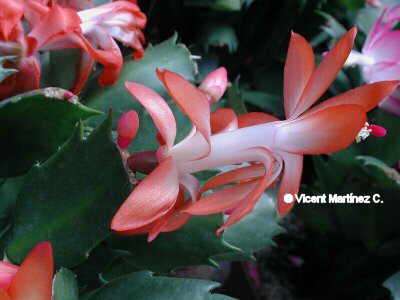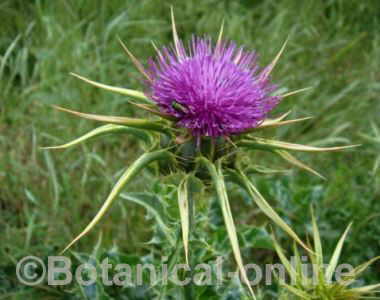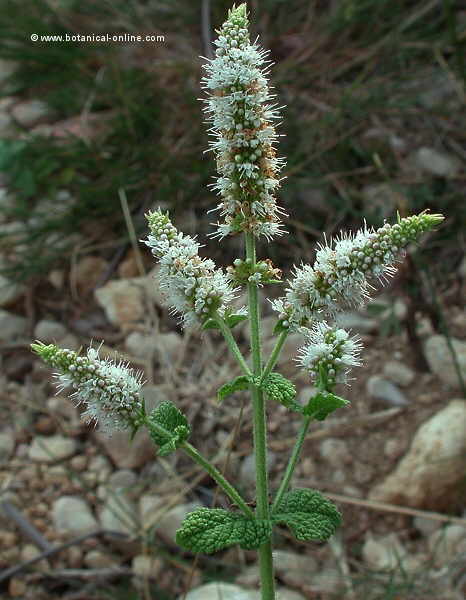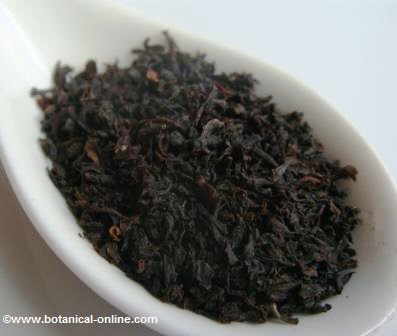How to grow thanksgiving cactus (Schlumbergera truncatus = Zygocactus truncatus)

Cactaceous plant of cylindrical stems whereof the leaves arise in form of plane segments till 5 cm long with 2-4 teeth on the margin. Bright green or reddish when the plant becomes mature. Pink or red flowers, tubular, up to 8 cm. Epiphytic cactus, coming from the Brazil reaching 1 m long.
Very notorious big flowers that appear from October to January. In case of not being present during this period, flowering can be forced by diminishing the time of exhibition of the plant to the light. The bloom is sensitive to the photoperiod and it doesn’t take place when the days are longer, so what it is necessary to provide the plant an artificial night, keeping the same one during some hours in a closed and dark place.
 Thanksgiving cactus (watering)
Thanksgiving cactus (watering)
Water it moderately but regularly. A couple of times a week in summer, every 15 days or less in winter.
Not to flood to avoid the leaves rot. Spray the leaves when it is very hot, without wetting the flowers. A watering excess during the resting time impedes the flowering or makes the leaves wither, in which case watering should be stopped to let the plant recover.
![]() Thanksgiving cactus (exposure)
Thanksgiving cactus (exposure)
In the sun, during cool seasons or in the demishade in hotter periods. It can be cultivated indoors. It doesn’t support freezing, so that, in the event of temperatures below 10ºC (50 F), take the flower pot indoors in an illuminated place. (You should usually do it in the last days of September). The suitable temperature to get a good blooming is between 11 and 25ºC. (52 – 77 F) An excess of cold or heat produces the fall of the floral buds before they open.
![]() Thanksgiving cactus (reproduction and transplanting)
Thanksgiving cactus (reproduction and transplanting)
By means of cuttings in spring or summer. Cut some pieces of a grown-up plant and allow them to dry one day before planting. Plant it on pearl bed, maintaining humidity constant not directly in the sun. It takes about 7 or eight weeks to root.
It can also also be reproduced by means of an apical graft on another cactus: Cut a couple of healthy leaves of a Thanksgiving cactus. Equally cut a 7 cm piece of the cactus on which it will be grafted. Make a vertical cut with a knife in its center. Peel both sides of the tip of the Thanksgiving cactus and place it inside the cut, holding it smoothly with a piece of cloth or thread. Place the plant in the shade and remove the tie when both vegetables pieces have welded.
Thanksgiving cactus doesn’t need to be transplanted very frequently. As most cacti, it prefers its roots to be tight inside the container. Transplanting should only be carried out when the plant loses bloom or stops flowering.
![]() Thanksgiving cactus (soil, fertiliser and illnesses)
Thanksgiving cactus (soil, fertiliser and illnesses)
Soil should have a good drainage. It should be a mixture of garden compost and peat. It must be kept loose, because, if soil becomes too too much tight, leaves will not grow properly. The appropriate pH can be between 5 and 6. Fertilize every 15 days in time of growth. The plagues that more affect this plant are:
- Mealybugs: They appear in form of small bugs of brown color on the leaves. They should be removed using a cloth soaked in alcohol and some insecticide should be applied.
- Red spider: Mainly originated by a too dry atmosphere, so we will apply a more consistent watering beside spraying the leaves, without wetting the flowers. Later on we should apply some insecticide.
Another problems:
- Falling of buds: Sometimes buds fall before they bloom. Reasons can be different: a deficient irrigation, either too much water or soil too dry. Sometimes if temperatures change too fast because the plant is subjected to undesirable drafts, can produce the same effect. The sudden fall can also be produced only by manipulating the plant when this one is full of buds or flowers. This species doesn’t like to be disturbed in these occasions. A plant with too many buds or flowers can let some of them fall without any other reason. A soil with too high nitrogen levels or too low potassium ones can produce this disturbance.
Differences between Thanksgiving cactus and Easter cactus
![]() More information about plants cultivation.
More information about plants cultivation.








